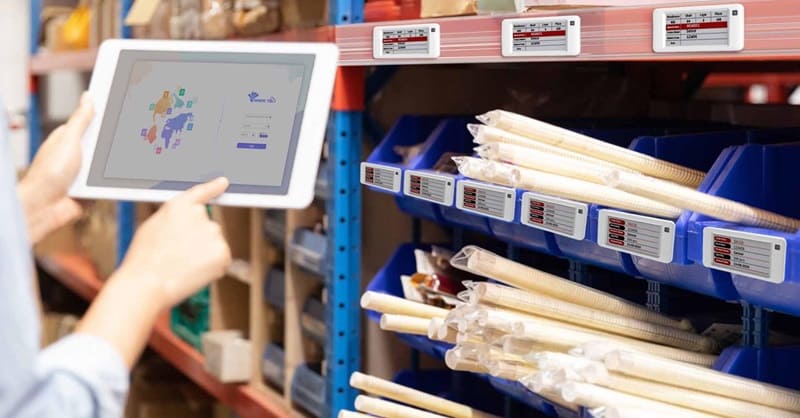
We know that electronic shelf tags use wireless communication technology to send and receive information. The communication protocol is a protocol that is commonly followed by communication modules, and the communication module is mainly used for communication between e tags and base stations. Since e tags are aimed at retail merchants, there are many implementations, and the additional function scenarios are constantly enriched.
There are generally the following requirements for transmission technology:
Low power consumption
Low cost of communication module
Long-distance communication
Strong anti-interference ability
High data security
High communication rate, etc.
The communication protocols currently used in e tags are
2.4G
Bluetooth
433MHZ
ZigBee
Wifi, etc.
Advantages and disadvantages of various communication protocols
Because the Wifi protocol has high power consumption, high price, and complex protocol coding, it is not suitable for low-power products; the Zigbee protocol has a low communication rate, limited propagation distance, and high latency, and is not suitable for e tags.
Therefore, the mainstream technologies used by e tags on the market are BLE5.0, BLE4.2, RFID 2.4G, 433 or other custom protocols:

1. In terms of communication protocols, 433 and RFID 2.4G do not have internationally applicable communication standards. The practicality, stability and security of more independent protocols cannot be well guaranteed. Bluetooth communication protocols have international universal standards
2. 433 has poor security and is easily attacked and deciphered. BLE5.0 uses advanced direct sequence spread spectrum technology. Direct sequence spread spectrum technology comes from military communications. Super strong anti-interference ability, extremely high working reliability and confidentiality are the basic requirements of military communications, and the BLE5.0 communication protocol uses AES-128 encryption, which is highly secure and ensures data transmission security.
3. The 433 system communication technology uses backward narrowband amplitude modulation technology, generally at 5-25Khz; it uses a single frequency point to work, which cannot effectively resist the multipath effect caused by obstruction, resulting in unreliable communication and unstable system; although RFID2.4G uses frequency modulation, it has fewer working channels, and the communication is also single-frequency with limited anti-interference ability; Bluetooth has good anti-interference performance: it can coexist with narrowband in the same frequency band without affecting its normal operation, has strong anti-multipath fading ability, has low requirements for environmental noise, and has high communication quality.
4. The BLE5.0 communication rate can reach 2Mbps, which is more than 8 times that of RFID 2.4G, the communication distance is 3 times that of RFID 2.4G, and the communication rate is more than 16 times that of 433.
5. The BLE5.0 protocol supports hardware device firmware upgrades over the air, without any cost, and can easily update and iterate the functions of the entire system.
All Minewtag electronic shelf tags use BLE5.0 communication technology for data transmission, with a short time to establish a connection, good stability and high security, low transmission power consumption, and a service life of up to five years. Contact expert teamto learn more about our electronic tags











